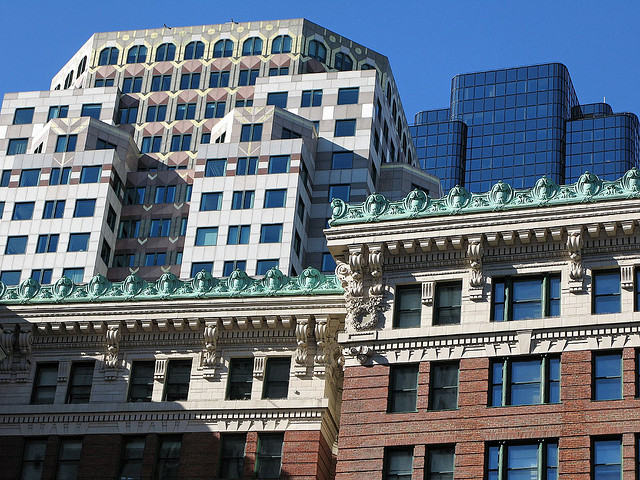Code Green Solutions


Boston's adaptation strategy should be widely applicable to buildings of different types and ages.
Boston is one of the oldest cities in the United States with an incredibly diverse existing building stock and interesting opportunities and challenges for improving preparedness to climate change.
Beyond building new to enhance resilience, older cities are left with the challenge of also reducing risk for historical buildings. In Boston’s case, the majority of residences were designed before WW II, predating any building codes and risk mitigation standards, and most commercial developments were built post 1960. This demands that Boston’s strategy be widely applicable to buildings of different types and ages.
In a report entitled “Building Resiliency in Boston“, an expert working group on climate preparedness, supported by the Barr Foundation, outlined a number of adaptation strategies for existing buildings. It focuses on multi-hazard measures capable of improving resilience by enhancing and reinforcing structures, and improving systems and operations.
A major strength of the report is that it draws on the experiences and best practices of other successful efforts such as Mayor Bloomberg’s PlaNYC. The Boston report also demonstrates that climate adaptation can be scaled to adjust to available resources without major public investment. Cities with limited resources can implement successful plans and programs which initially focus on identifying low cost high impact strategies, and scaling up efforts as resources become available. Some of these scalable strategies include increasing pervious surfaces to reduce heat island, wet and dry flood proofing, resistant landscape design, and energy efficiency.
Another key lesson learned is the importance of identifying local climate risks. Experiences from New York City, London, and Toronto all demonstrate a consistent effort to create mitigation strategies which address local climate vulnerabilities. Boston’s working group completed an extensive study of the various climate risks for different populations, neighborhoods, and building types with supporting data and visualization tools. Quantifying climate risk not only allows cities to evaluate risk but also provides benchmarks for future measurement and verification of resiliency strategies.
This recent effort in Boston provides a number of best practices for future municipal efforts in adaptation and resilience. Communities should carefully consider previous work to their own to improve resilience and continue knowledge sharing, while also designing mitigation measures which are suited to local climate risk and built environments.